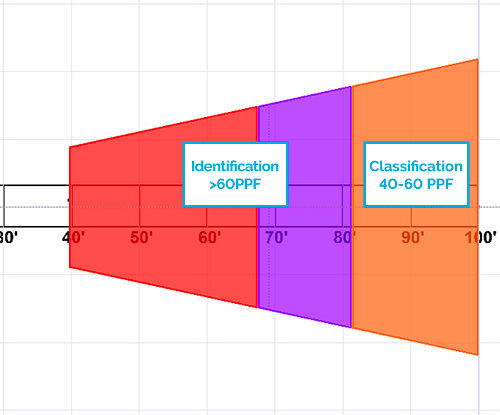What is Pixels Per Foot?
In an open field of view, a security camera can technically see forever. How far away from a camera you can get usable video is another matter. Whether or not a person is readily identifiable or just a featureless blob on your video depends on the size of the subject on the recorded image.
The security industry has a standard term to measure the size of an object on recorded video: Pixels Per Foot (PPF). Pixels Per Foot is a measurement of quality of the final video produced based on the size the area the video is recording.
Pixels Per Foot depends on the distance from the camera, the focal length of the camera lens and the resolution of the camera. The longer the focal length of a camera's lens, the higher PPF at a longer distance at the expense of a narrower field of view. An easy way to think about it is how many pixels a license plate (a US license plate is about 1 foot wide) would take up at a certain distance. If a license plate is 100 pixels wide in a recorded image, then the scene at that distance is 100 Pixels Per Foot.
These diagrams show the relationship between PPF and focal length:
HD420 Camera - 4MP @ 3.6mm lens (70° Field of View)

HD820 Camera - 4MP @ 12mm lens (23° Field of View)

For more information about Pixels Per Foot and calculating the effective range of your camera, please see the DIY Guide How Far Can I See With My Cameras?


